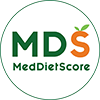Physician Resources
Types of Cholesterol
Cholesterol is a waxy, yellow fat that is found in every cell in your body. It doesn’t just float around in the blood by itself, however, it is carried around in the blood by lipoproteins. There are 2 main types: HDL (high density lipoproteins) and LDL (low density lipoproteins).
Fats in the body like cholesterol are called “lipids” and there are a number of different types that are important to know about.
LDL Cholesterol – Low Density Lipoprotein
LDL is considered to be “bad cholesterol” and is made up of particles of fats that carry cholesterol out to the body’s tissues. When there is too much LDL cholesterol in the bloodstream it can become a part of a thick, hard layer on the inside of your arteries called “plaques”. The build of plaque is known as atherosclerosis and the thicker the layer is, the more narrowed the arteries become.
When the arteries in the heart narrow because of plaque buildup, there is a decrease in blood flow. The blood carries oxygen and when there is less blood flow, there is less oxygen carried to the tissues of the body. If the blood flow in the arteries in the heart gets blocked completely, the lack of oxygen causes a heart attack. The same can happen with the arteries that feed blood to the brain, and when they become blocked the lack of oxygen to the brain causes a stroke.
Keeping the LDL cholesterol level as low as possible is key to preventing heart attack and stroke. The optimal level depends on your other risk factors. See the table at the bottom of the page for recommended levels of the different lipids.
HDL Cholesterol – High Density Lipoprotein
HDL Cholesterol is also known as the “good cholesterol” because having higher levels of HDL protects against heart attack and stroke. Researchers believe that the particles of fat that make up HDL cholesterol carry the cholesterol away from the arteries and back to the liver where it can be removed from the body. By doing this there is less cholesterol at the site of the artery to form plaques.
You want your HDL levels to be as high as possible.
Triglycerides
Triglycerides are another important lipid. Like cholesterol, it is found in foods you eat but your body also makes its own triglycerides. People with high triglycerides often have a high total cholesterol, a high LDL cholesterol and a low HDL cholesterol level.
Like a high total cholesterol and a high LDL cholesterol, having high triglycerides is a risk factor for the build up of plaque and heart disease. People who have diabetes and those who are obese are more likely to have high triglycerides.
What should your results be?
The table below is based on the current recommendations for the different types of cholesterol. High risk would be someone with three or more risk factors. It is best for people with two risk factors to be in the optimum range and lower risk people should work to have there cholesterol in the desirable range.
|
Total Cholesterol |
LDL Cholesterol |
HDL Cholesterol |
Triglycerides |
| If your risk is very high (3 or more risk factors) |
Under 160 |
As low as possible |
Above 40 |
Under 150 |
| Optimum (2 or more risk factors) |
161- 179 |
Under 100 |
Above 40 |
Under 150 |
| Desirable levels |
180 – 199 |
100 – 129 |
Above 40 |
150-199 |
| Borderline high cholesterol |
200 – 239 |
130 – 159 |
|
Over 200 |
| High cholesterol |
Over 240 |
160 – 189 |
|
Over 200 |
| Very high cholesterol |
Over 240 |
over 190 |
|
Over 200 |
Risk factors for heart disease include:
- Family history (mother, father, sister or brother with heart disease)
- Smoking (any smoking at all counts!)
- High blood pressure (hypertension)
- Diabetes
- Being male or being a post-menopausal female
How do you compare?
Fill your cholesterol results in to the spaces below. Keep track of your progress toward optimum over time.
| Date |
Total
Cholesterol |
LDL
Cholesterol |
HDL
Cholesterol |
Triglycerides |
|
|
|
|
|
|
|
|
|
|
|
|
|
|
|
|
|
|
|
|
LDL Cholesterol - Low Density Lipoprotein
LDL is considered to be “bad cholesterol” and is made up of particles of fats that carry cholesterol out to the body’s tissues. When there is too much LDL cholesterol in the bloodstream it can become a part of a thick, hard layer on the inside of your arteries called “plaques”. The build of plaque is known as atherosclerosis and the thicker the layer is, the more narrowed the arteries become.
When the arteries in the heart narrow because of plaque buildup, there is a decrease in blood flow. The blood carries oxygen and when there is less blood flow, there is less oxygen carried to the tissues of the body. If the blood flow in the arteries in the heart gets blocked completely, the lack of oxygen causes a heart attack. The same can happen with the arteries that feed blood to the brain, and when they become blocked the lack of oxygen to the brain causes a stroke.
Keeping the LDL cholesterol level as low as possible is key to preventing heart attack and stroke. The optimal level depends on your other risk factors. See the table at the bottom of the page for recommended levels of the different lipids.
HDL Cholesterol - High Density Lipoprotein
HDL Cholesterol is also known as the “good cholesterol” because having higher levels of HDL protects against heart attack and stroke. Researchers believe that the particles of fat that make up HDL cholesterol carry the cholesterol away from the arteries and back to the liver where it can be removed from the body. By doing this there is less cholesterol at the site of the artery to form plaques.
You want your HDL levels to be as high as possible.
Triglycerides
Triglycerides are another important lipid. Like cholesterol, it is found in foods you eat but your body also makes its own triglycerides. People with high triglycerides often have a high total cholesterol, a high LDL cholesterol and a low HDL cholesterol level.
Like a high total cholesterol and a high LDL cholesterol, having high triglycerides is a risk factor for the build up of plaque and heart disease. People who have diabetes and those who are obese are more likely to have high triglycerides.
What should your results be?
The table below is based on the current recommendations for the different types of cholesterol. High risk would be someone with three or more risk factors. It is best for people with two risk factors to be in the optimum range and lower risk people should work to have there cholesterol in the desirable range.
|
Total Cholesterol |
LDL Cholesterol |
HDL Cholesterol |
Triglycerides |
| If your risk is very high (3 or more risk factors) |
Under 160 |
As low as possible |
Above 40 |
Under 150 |
| Optimum (2 or more risk factors) |
161- 179 |
Under 100 |
Above 40 |
Under 150 |
| Desirable levels |
180 - 199 |
100 - 129 |
Above 40 |
150-199 |
| Borderline high cholesterol |
200 - 239 |
130 - 159 |
|
Over 200 |
| High cholesterol |
Over 240 |
160 - 189 |
|
Over 200 |
| Very high cholesterol |
Over 240 |
over 190 |
|
Over 200 |
Risk factors for heart disease include:
- Family history (mother, father, sister or brother with heart disease)
- Smoking (any smoking at all counts!)
- High blood pressure (hypertension)
- Diabetes
- Being male or being a post-menopausal female
How do you compare?
Fill your cholesterol results in to the spaces below. Keep track of your progress toward optimum over time.
| Date |
Total Cholesterol |
LDL Cholesterol |
HDL Cholesterol |
|
|
|
|
|
|
|
|
|
|
|
|
|
|
|
|
|
|
|
|
|



